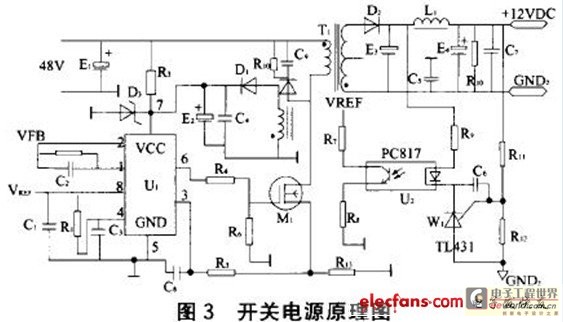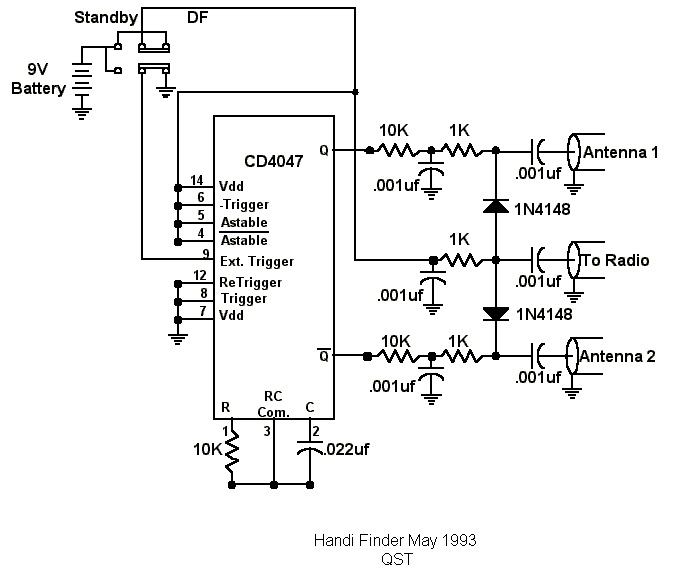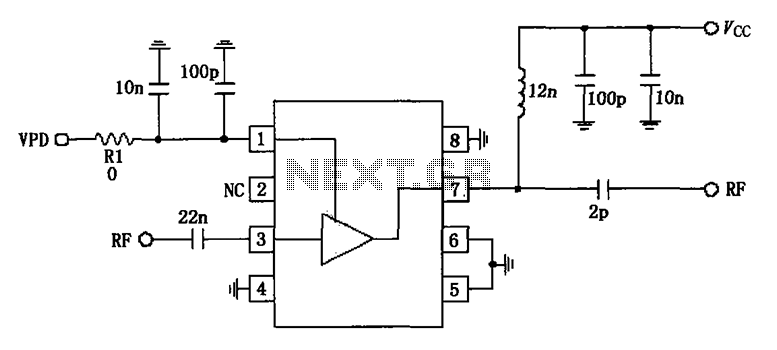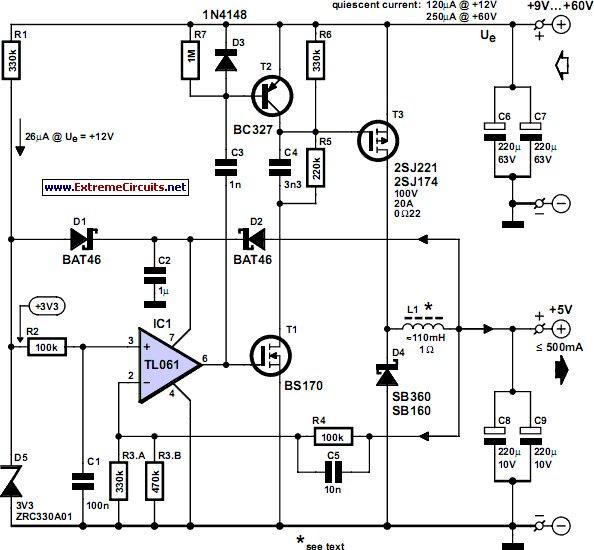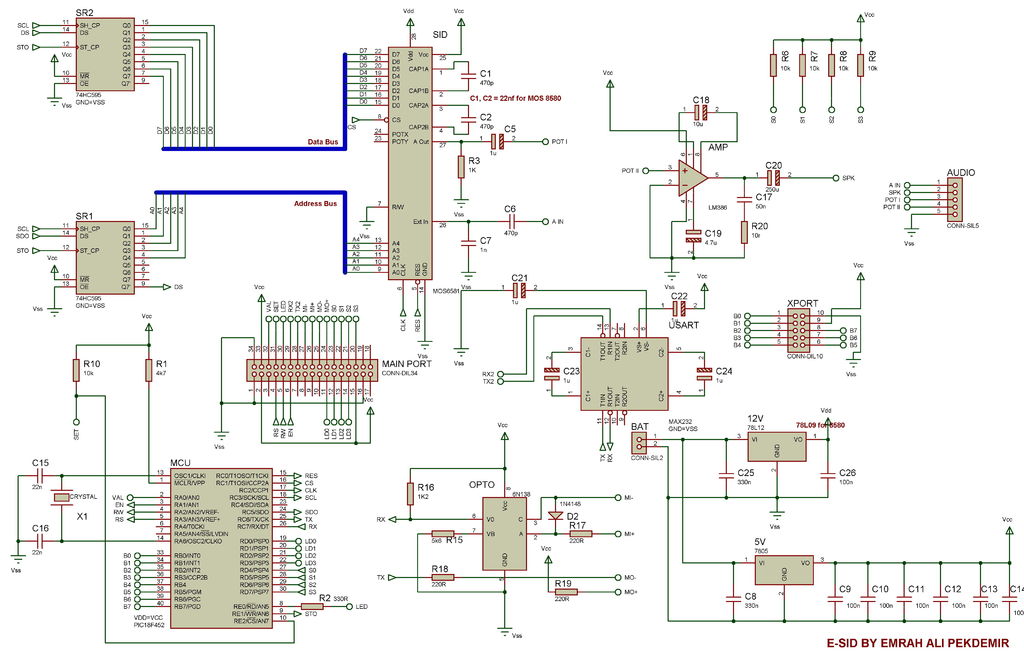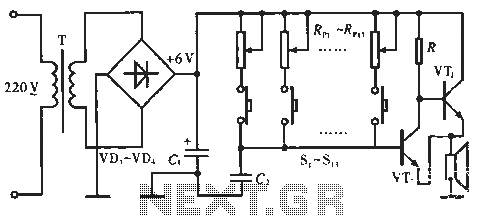
Low Ohms Adaptor For DMMs Based On An LM317 Regulator
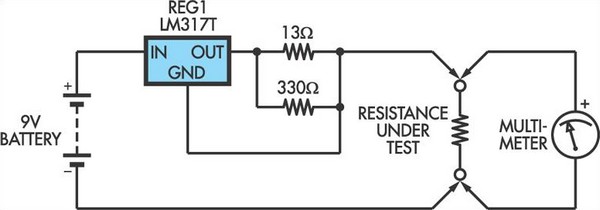
This adapter circuit functions as a 100mA constant current source. It is connected across a low-value resistor, the resistance of which is to be measured, and the resulting voltage drop can then be assessed using a digital multimeter (DMM). Setting the DMM to the 200mV range allows for resistance measurements up to 2Ω with high resolution, while the 2V range enables a maximum resistance measurement of 20Ω. The construction involves mounting the LM317 adjustable 3-terminal regulator within a small plastic enclosure, along with a battery and two resistors connected to the output and adjustment pins. An on/off switch is unnecessary, as no current will flow when no external resistance is connected across the test terminals. Using 1% tolerance resistors, the accuracy of the circuit should remain within 5%, which can be enhanced by measuring the current and adjusting the resistance between the output and adjustment pins of the LM317 to achieve a precise 100mA output. Prior to utilizing the adapter, it is essential to verify that the multimeter will not be damaged by the full output voltage (6V+) when set to a low voltage range. Additionally, caution must be exercised, as the voltage and current output of the adapter may harm components during "in-circuit" tests.
The described adapter circuit serves as a reliable constant current source suitable for measuring low resistances with high precision. The LM317 regulator is a versatile component that, when configured correctly, can provide a stable output current regardless of variations in load resistance, making it ideal for this application. The use of a low-value resistor allows for the measurement of small resistances, which is crucial in many electronic testing scenarios.
The circuit design includes two resistors: one connected between the output and adjustment pins of the LM317, and the other serving as a load. The resistor values should be selected to ensure that the output current remains at the desired 100mA level. The output voltage across the load resistor can be calculated using Ohm's law (V = I × R), which, given the constant current, allows for straightforward resistance calculations based on the measured voltage.
The choice of a plastic enclosure for the circuit enhances portability while protecting the components from environmental factors. The absence of an on/off switch simplifies the design and reduces the risk of accidental operation, as the circuit only draws current when a load is connected.
For improved accuracy, the circuit can be calibrated by adjusting the resistor values based on the actual current measured. This calibration ensures that the output current remains consistent, which is critical for precise resistance measurements. Furthermore, users should be aware of the potential risks associated with connecting the adapter to sensitive components, as the output voltage and current could exceed the ratings of certain devices, leading to damage. Proper precautions should be taken to avoid applying the full output voltage to the multimeter when it is set to a low voltage range, ensuring safe and effective operation of the adapter circuit.This adaptor circuit is essentially a 100mA constant current source. It is applied across a low-value resistor of unknown value (ie, the resistance to be measured) and the resulting voltage drop can then be measured by a digital multimeter (DMM). Setting your DMM to the 200mV range will enable it to measure up to 2O with high resolution while the
2V range will give a maximum resistance measurement of 20O. Construction could consist of mounting the LM317 adjustable 3-terminal regulator inside a small plastic box together with the battery and two resistors connected to the output and Adj pins. No on/off switch is required since no current will be drawn when no external resistance is connected across the Test terminals.
Accuracy using 1% resistors should be within 5% and this could be improved by measuring the current, adjusting the resistance between the output and Adj pins of the LM317 to provide a precise 100mA. Before using the adaptor, check that your meter is not likely to be damaged by having the full output (6V+) applied when it is set to a low voltage range.
Similarly, be aware that the voltage and current output of the adaptor may damage components if you use it for "in-circuit" tests. 🔗 External reference
The described adapter circuit serves as a reliable constant current source suitable for measuring low resistances with high precision. The LM317 regulator is a versatile component that, when configured correctly, can provide a stable output current regardless of variations in load resistance, making it ideal for this application. The use of a low-value resistor allows for the measurement of small resistances, which is crucial in many electronic testing scenarios.
The circuit design includes two resistors: one connected between the output and adjustment pins of the LM317, and the other serving as a load. The resistor values should be selected to ensure that the output current remains at the desired 100mA level. The output voltage across the load resistor can be calculated using Ohm's law (V = I × R), which, given the constant current, allows for straightforward resistance calculations based on the measured voltage.
The choice of a plastic enclosure for the circuit enhances portability while protecting the components from environmental factors. The absence of an on/off switch simplifies the design and reduces the risk of accidental operation, as the circuit only draws current when a load is connected.
For improved accuracy, the circuit can be calibrated by adjusting the resistor values based on the actual current measured. This calibration ensures that the output current remains consistent, which is critical for precise resistance measurements. Furthermore, users should be aware of the potential risks associated with connecting the adapter to sensitive components, as the output voltage and current could exceed the ratings of certain devices, leading to damage. Proper precautions should be taken to avoid applying the full output voltage to the multimeter when it is set to a low voltage range, ensuring safe and effective operation of the adapter circuit.This adaptor circuit is essentially a 100mA constant current source. It is applied across a low-value resistor of unknown value (ie, the resistance to be measured) and the resulting voltage drop can then be measured by a digital multimeter (DMM). Setting your DMM to the 200mV range will enable it to measure up to 2O with high resolution while the
2V range will give a maximum resistance measurement of 20O. Construction could consist of mounting the LM317 adjustable 3-terminal regulator inside a small plastic box together with the battery and two resistors connected to the output and Adj pins. No on/off switch is required since no current will be drawn when no external resistance is connected across the Test terminals.
Accuracy using 1% resistors should be within 5% and this could be improved by measuring the current, adjusting the resistance between the output and Adj pins of the LM317 to provide a precise 100mA. Before using the adaptor, check that your meter is not likely to be damaged by having the full output (6V+) applied when it is set to a low voltage range.
Similarly, be aware that the voltage and current output of the adaptor may damage components if you use it for "in-circuit" tests. 🔗 External reference
Warning: include(partials/cookie-banner.php): Failed to open stream: Permission denied in /var/www/html/nextgr/view-circuit.php on line 713
Warning: include(): Failed opening 'partials/cookie-banner.php' for inclusion (include_path='.:/usr/share/php') in /var/www/html/nextgr/view-circuit.php on line 713
